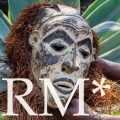The La Galigo manuscript, preserved in twelve volumes at Leiden University Library, is the longest epic in the world and a cultural heritage of immense importance to the Bugis people. It has been inscribed in UNESCO’s Memory of the World register in 2011. Part of this rather thin, rolled-up text is preserved in Museum La Galigo in Makassar.

Yet for centuries, this manuscript has been estranged from its homeland. Colonialism deprived the Bugis of access to the knowledge of their own ancestors. The La Galigo manuscript came to the Netherlands through the efforts of the Dutch Bible Society in the late 19th century.
In the early 20th century, it was transferred to the Leiden University Libraries on a permanent loan. Before the advent of digitisation, La Galigo was essentially inaccessible to its rightful owners. This created a distance that was not only geographical, but also cultural and epistemological.
In this context, the idea of ‘returning’ La Galigo should not merely be understood as repatriating the physical manuscripts to Indonesia. More crucial is the repatriation of meaning: bringing back the content, values, and spirit of La Galigo into the everyday life of the Bugis community. A manuscript has truly returned not when it is displayed in a museum, but when it once again becomes a spoken language, a narrated story, a cherished value, and a lived inspiration.
What is La Galigo about?
As Nurhayati Rahman ea. have described in the International Journal of Religion: La Galigo as a literary work has an embodiment of high artistic taste both in terms of aesthetics and ethical content. As a literary work, its beauty lies in the convention of language, literature, metrum, and its plot. The contents include various kinds of traditional sources, norms, and the concepts of life of community groups, both in the form of history, culture, tradition, art, law, customs, and science such as agriculture, shipping, trade, overseas and so on.
The events and figures in La Galigo resembling a show about the Bugis life atmosphere along with their social and cultural activities. It indicates that literature, in addition to its aesthetic function, has also a role as a cultural tool for humanity. Meanwhile, its supporters always consider La Galigo text and manuscript to be sacred and hallow. All events and characters believed to be real and factual. As a result, it is hallowed and became a reference for them.
Thus, La Galigo, in addition to being a literary work is also a sacred literature.

What is repatriation?
To repatriate the meaning of La Galigo is to create the space for this epic to once again become part of a living tradition. This can be pursued in several ways.
-
- Through translation and adaptation: the La Galigo texts must be presented in modern Bugis and in a more communicative Indonesian language, so that they are not only accessible to academics but also understood by students, artists, and the wider public.
- Through cultural and artistic revitalization, La Galigo can be brought to life through theatre, traditional music, dance, short films, and digital content. In this way, its stories no longer remain static as texts, but are transformed into shared cultural experiences.
- Through integration in education, La Galigo can be included as local content in schools across South Sulawesi. Bugis children deserve to grow up knowing the mythology, moral values, and cosmology of their ancestors, just as children elsewhere grow up with their own national epics and classical tales.
- Through the excavation of contemporary meaning: the contents of La Galigo are not only about the past but also hold values deeply relevant to the present. For instance, its stories of human harmony with nature can inspire responses to the global climate crisis.
Yet this process cannot rest solely on the shoulders of the Bugis people. The Dutch must acknowledge its responsibility. The manuscript has been kept for centuries as a result of colonialism, separating the Bugis people from their own knowledge. Therefore, it is not enough for the Netherlands to simply say, “The manuscript has been digitized.”
The Netherlands must:
- Officially acknowledge that colonialism estranged La Galigo from its people.
- Support the repatriation of meaning, not only digitization: through funding for translation, cultural festivals, research centres, and educational programs in South Sulawesi.
- Establish equal collaboration, in which Bugis researchers, artists, and communities are the main subjects, not merely objects of study.
- Guarantee unrestricted access, ensuring that the Bugis people can use La Galigo for their cultural needs without commercial limitations.

The repatriation of meaning is the path of justice. La Galigo must not remain merely a record on the shelves of Leiden or an academic artifact in Western institutions. It is a living heritage that must once again breathe in the land of the Bugis.
Returning La Galigo to its people is not only about relocating its physical manuscripts, but about reviving its meaning. Let this epic once again belong to the Bugis as a story, as a value, as a guide, as a spirit.
For a manuscript has truly returned only when it is no longer estranged, but reunited with the language, memory, and life of its people.
Pictures by Wahyudi Iskandar, all taken in Museum La Galigo in Makassar


